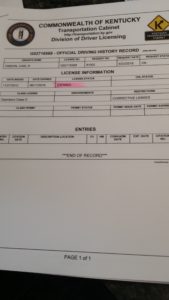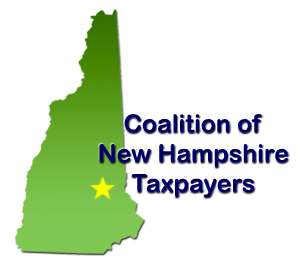(Hour 1c)  Rich talked to Ed Naile, Chairman of the Coalition of New Hampshire Taxpayers, about the Coalition’s upcoming event for A Question of Voter Fraud. Ed then spoke about Carl Robert Gibson, telling Rich about finding his Commonwealth of Kentucky driving history and more.
Rich talked to Ed Naile, Chairman of the Coalition of New Hampshire Taxpayers, about the Coalition’s upcoming event for A Question of Voter Fraud. Ed then spoke about Carl Robert Gibson, telling Rich about finding his Commonwealth of Kentucky driving history and more.
[soundcloud url=”https://api.soundcloud.com/tracks/270312618″ params=”auto_play=false&hide_related=false&show_comments=true&show_user=true&show_reposts=false&visual=true” width=”100%” height=”450″ iframe=”true” /]
Voter Photo ID: North Carolina Proves it works Very Well, Indeed
One of the favorite arguments Democrats use against requiring voters to provide a photo ID is that it risks disenfranchising masses of the poor. The numbers are now in from the first election in North Carolina in which voters had to present one of several forms of government issued photo identification cards. It turns out it wasn’t much of an issue.
Procedures allowed those without a valid photo ID to cast a provisional ballot after being instructed that if they would then go the Board of Election (BoE) office in their county and present a proper ID by the day before the official canvas took place the week following the election, their vote would be counted. If no ID was presented before the canvass, these people were told the law is clear: A provisional vote cast because the voter failed to provide photo ID will not be counted.
On March 15, there were 2,323,590 primary ballots cast in North Carolina. According to the state Board of Elections, there were 40,193 provisional ballots cast. Of those provisional ballots, 2,371 were cast because the voter did not present an acceptable photo ID at the polling place. That is about one tenth of a percent of all ballots cast, or about one in a thousand voters who couldn’t or wouldn’t comply.
Election judges are instructed to allow all those who don’t appear to be qualified to vote at a given precinct for whatever reason the option of casting a provisional ballot. The reason for this policy is to allow the process to move smoothly by keeping the election judges from getting into arguments with their neighbors. The often-irritated person gets to vote and it may or more likely may not count after the decision of the three-person county BoE commission. In North Carolina,t he party of the sitting Governor gets two seats on the county commission, the party out of power gets one.
A provisional ballot is a machine-readable paper ballot similar to a standardized test form. The name of the voter and the reason why they cast a provisional ballot are not on the paper ballot itself. That information is on the provisional application to vote, which becomes part of the package the ballot is in. If the BoE commissioners determine the provisional ballot should count, the identifying information is removed so that ballot secrecy is maintained during the actual tally.
The reason provisional ballots were cast in North Carolina’s March primary were as follows, in order of frequency
|
No record of voter registration
|
14,502
|
|
Voter said they changed party affiliation, but no change shown in record
|
7,189
|
|
Voter is registered in the county, but went to the wrong precinct 6
|
6,671
|
|
Voter moved within same county more than 30 days before election but didn’t change voter registration to new address
|
6,160
|
|
No acceptable ID presented
|
2,371
|
|
Voter previously removed from rolls
|
2,075
|
|
System does not recognize address on registration for purposes of assigning voting jurisdictions (Geocode issue)
|
452
|
|
Jurisdictional dispute: voter insists they are in different electoral district than what is shown on the official record
|
449
|
|
System shows voter already voted
|
300
|
|
Voter showed no reasonable resemblance to photo ID
|
13
|
|
Voted during extended hours (precinct opened late or emergency effected
ability of people to vote during normal hours)
|
11
|
There are formal guidelines for the county BoE to follow when determining if a provisional ballot shall count in all the above situations. Many involve a double-checking of official records because clerical mistakes will happen. Most of the time, however, the would-be voters were mistaken as to their registration status.
Showing up to vote at the wrong precinct is particularly disliked by election officials because such voters almost always will have then cast a provisional vote in at least one local race they are not eligible to vote in. To prevent this from happening, the secrecy of the paper ballot has to be compromised in order to redact one or more votes in down ballot races, such as a state legislative seat, a county commission ward, local school district seat and the like.
As a general rule, the provisional ballots most likely to be counted are those of the registered voters who showed up with proper ID in the proper polling place for their current address after not reporting a move within the same county to the local board of election. Indeed, the new computerized check-in systems allow election judges at each precinct to access the registration records for the entire county and to make such address changes to the laptop, which are then downloaded to the county voter database the next day. Such changes used to involve going though paper forms for transferring voters in and out of precincts, which was both time-consuming and more prone to error.
In the precinct where I serve as chief election judge there were only a handful of provisional ballots cast in the March 15 primary. One was a case of no record of voter registration by a person who insisted her registration had been transferred from her old county of residence. One was an unreported move within the county. Then there was all election officials’ worst nightmare: two people with the same name and almost the same address, a father and son who live in separate houses located side by side on the same farm. During early voting that set of election judges marked off the older Joe Jones in the database as voting when it was Young Joe who voted early. On Election Day when the error was discovered Joe Jones the elder then had to vote a provisional ballot, which was certainly counted under the circumstances.
We also had one person declined to cast a provisional ballot when he learned the record showed he was still registered as a Democrat and thus could not vote in the Republican primary. Another person showed up without proper ID but when informed that her provisional vote would only count if she drove to the county seat within the next week decided to go back home to fetch her wallet.
One of the favorite arguments Democrats use against requiring voters to provide a photo ID is that it risks disenfranchising masses of the poor. The numbers are now in from the first election in North Carolina in which voters had to present one of several forms of government issued photo identification cards. It turns out it wasn’t much of an issue.
Procedures allowed those without a valid photo ID to cast a provisional ballot after being instructed that if they would then go the Board of Election (BoE) office in their county and present a proper ID by the day before the official canvas took place the week following the election, their vote would be counted. If no ID was presented before the canvass, these people were told the law is clear: A provisional vote cast because the voter failed to provide photo ID will not be counted.





